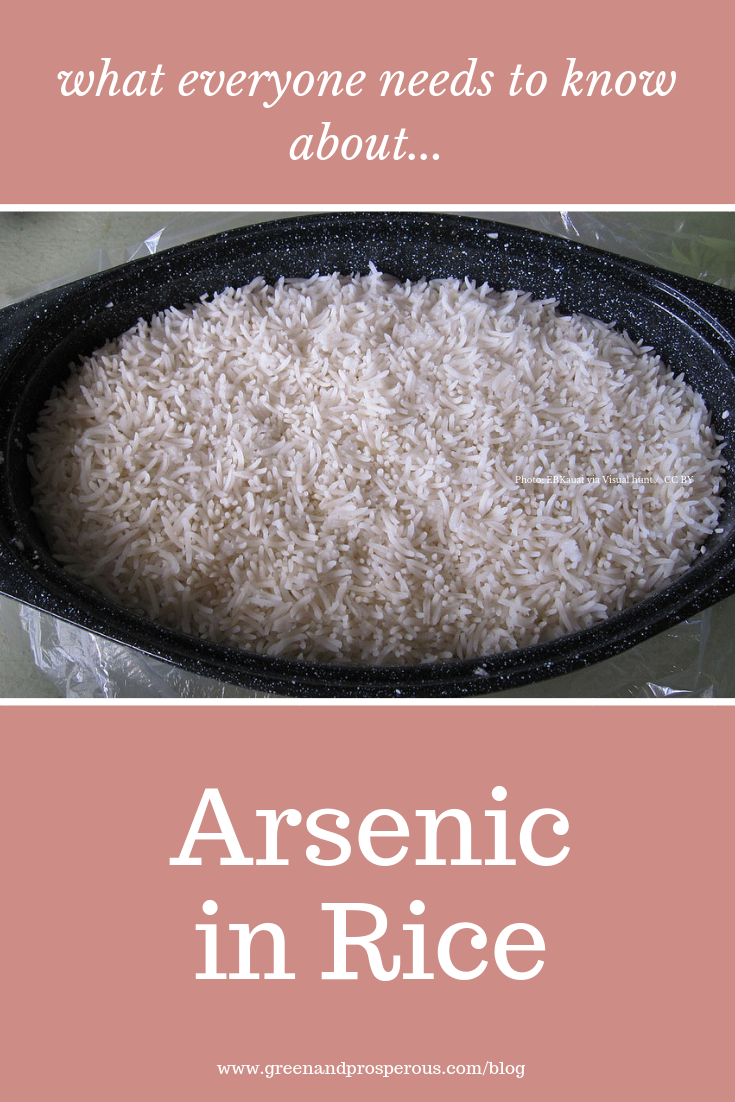What Everyone Needs to Know about Arsenic in Rice
/Arsenic has been the topic of a growing number of media reports over the past decade. While a few stories have focused on the levels of arsenic in drinking water and its health effects, especially on children, a more recent spate of reports has highlighted the prevalence of arsenic in rice, a diet staple in most parts of the world.
Exposure to arsenic is a growing global health problem, but there’s a lot that scientists and health workers still don’t know about the extent to which it is affecting the health of vulnerable populations.
What exactly is arsenic, and how does it affect your health? Is there anything you can do to reduce your exposure to arsenic in rice and other food you eat? These are a few of the questions that this week’s blog post aims to answer.
Natural and synthetic arsenic
Arsenic is a semi-metal element found organically in the air, water, and soil, and inorganically as a synthetic compound. As an organic compound, it can’t be completely eliminated from food or water, but its organic form is widely believed to be less detrimental to human health than its synthetic form.
The synthetic form of arsenic is well-known for its use as a rat poison (or people poison). It is also used as an insecticide and as an agent in semiconductors, bronzing, and pyrotechnics. Compounds are made from arsenic to create special kinds of glass and to preserve wood.
Arsenic enters water and soil in several ways: from natural deposits in the earth or from industrial and agricultural pollution. It is present in high levels in the groundwater of numerous countries around the world, Argentina, Chile, Bangladesh, India, China, Mexico, and the United States among them.
How does arsenic affect your health?
Long-term exposure to arsenic is linked to many health disorders including skin lesions; cardiovascular disease; diabetes mellitus; and cancers of the bladder, skin, lung, liver, and prostate. Pregnant women, unborn babies, and young children are especially susceptible to the harmful effects of exposure to inorganic arsenic. The impact of exposure is affected by the amount and length of exposure, the individual’s nutritional status, and exposure to other toxic chemicals.
The effects of exposure are also determined by biological (including genetic) mechanisms, which may increase or offset negative health outcomes. For example, a story that was moderately covered in the spring of 2015 focused on a population of villagers in Argentina that possesses a special gene that enables them to flush the toxin out of their systems before it can do serious damage, at least in the short term.
Most of us are not so lucky, and if you eat rice, you are being exposed to levels of arsenic that can cause serious short term and/or long term health problems.
How much arsenic is there in rice?
Inorganic arsenic is known to accumulate at high levels in all varieties of rice, a staple part of the diet in over half the world’s population. Its presence in this crop has caused concern in scientific communities because it accumulates at much higher quantities than in other crops. In the US, there is no regulatory limit on the amount of inorganic arsenic that rice can contain, although limits have been established for drinking water.
The amount of arsenic present varies according to the type and packaging of rice. Highly processed rice foods like rice cereal (for infants), rice pasta, rice cakes and rice milk contain the highest levels of inorganic arsenic. Minimally processed rice (i.e. raw rice) varies in the amount of inorganic arsenic it contains: rice varieties from Texas, Arkansas, and Louisiana (in the US) contain the highest amount, while basmati rice from California, India, and Pakistan, and sushi rice from the US contain the lowest amount. Brown rice varieties tend to contain less arsenic than white rice varieties.
Even organic rice contains high levels of arsenic, so buying organic varieties won’t make a difference in the amount of arsenic you are being exposed to.
How to reduce your exposure to arsenic in rice
There is a way to drastically reduce your exposure to inorganic arsenic in rice, however, and it has everything to do with the way you prepare it before cooking. The preparation is simple and easy: just rinse the rice multiple times before cooking. Rinsing it at least 3 separate times, until the water runs clear, will flush out a lot of the arsenic. Some swear by cooking methods that involve adding 12 parts water to 1 part rice, heating until the rice is cooked, then rinsing again. This method is believed to remove up to 57% of the inorganic arsenic.
A third (and in my opinion, easier) way of flushing out up to 80% of inorganic arsenic involves rinsing the rice until the water runs clear, soaking it overnight in water, and quickly rinsing again before cooking. Because arsenic is mobile in water, it can be easily removed in this way, and this method also reduces the cooking time. Even soaking it for half an hour removes more arsenic than rinsing alone, and the cooking time is similarly reduced.
Thinking of making rice for dinner this week? You’ll find an easy recipe below for making relatively arsenic-free rice, every time.
***For this recipe, you should first rinse the rice until the water runs clear, then soak at least 30 minutes, but preferably overnight, before cooking..***
Perfect Basmati Rice
Use 1 cup brown basmati rice to 2 cups water. (or 1 cup white basmati to 1 ½ cups water).
Place the rice in water (if you like, you can mix in a splash of coconut or olive oil, both of which are much healthier options than canola or vegetable oils. Ghee/clarified butter also works well, and if you can buy the organic variety, even better!).
Heat on medium-high and let cook until done, approximately 20-25 minutes.
Drain any excess water off the top.
Let stand a few minutes and fluff with fork.
Want more information like this on creating a healthier, greener lifestyle for yourself and your family? Click the button below for access to our library of exclusive free reports, tools, and tips. You can also preview some of the library content before signing up. So what are you waiting for???
Like this? Please Pin!









































